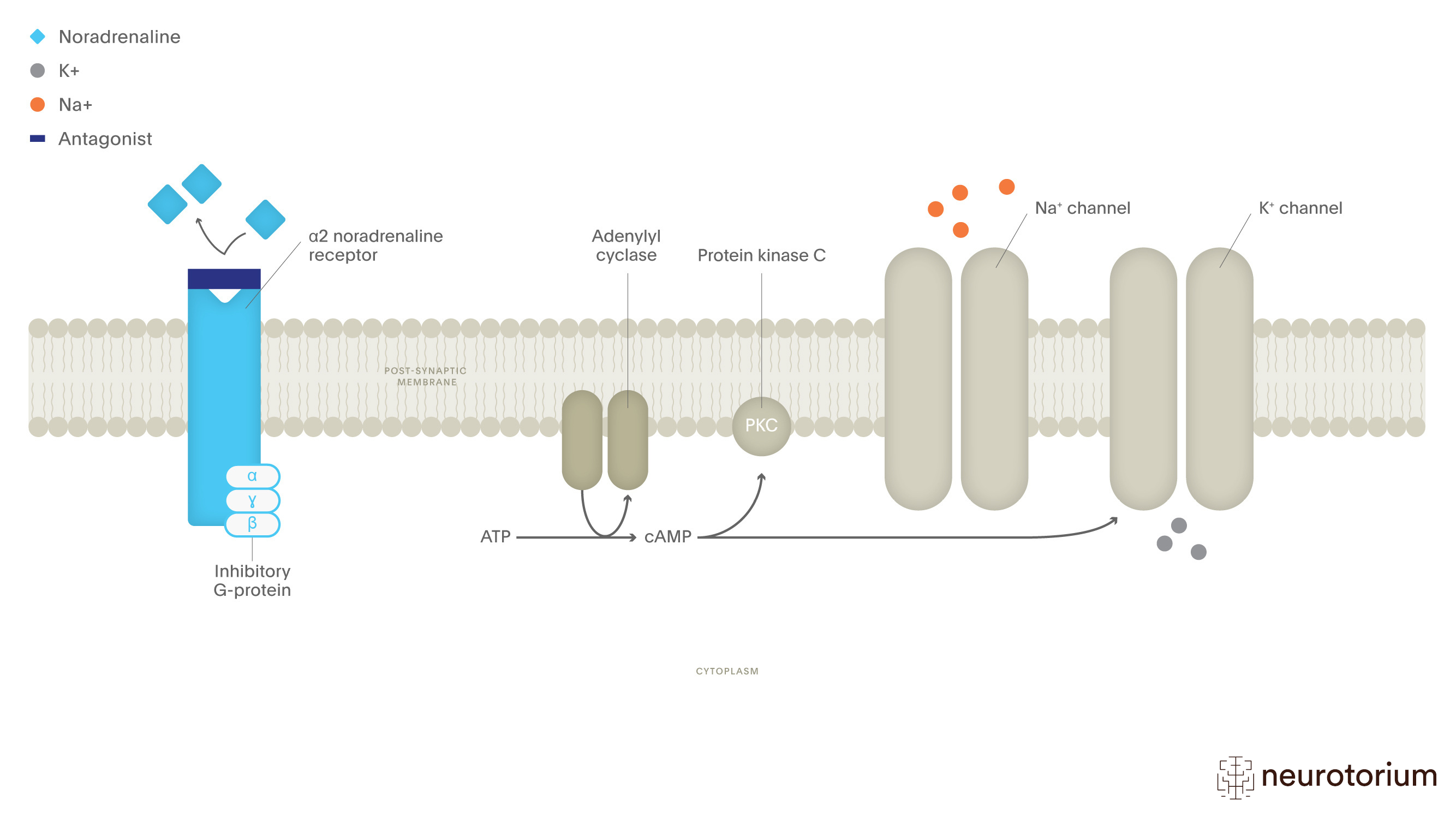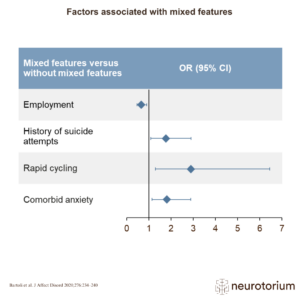Antagonist binding to the α2 noradrenaline receptor induces noradrenaline release. Binding of an antagonist to the noradrenaline receptor prevents binding of noradrenaline or of an agonist to the receptor and prevents secondary messenger inhibition allowing cell depolarization to occur.





